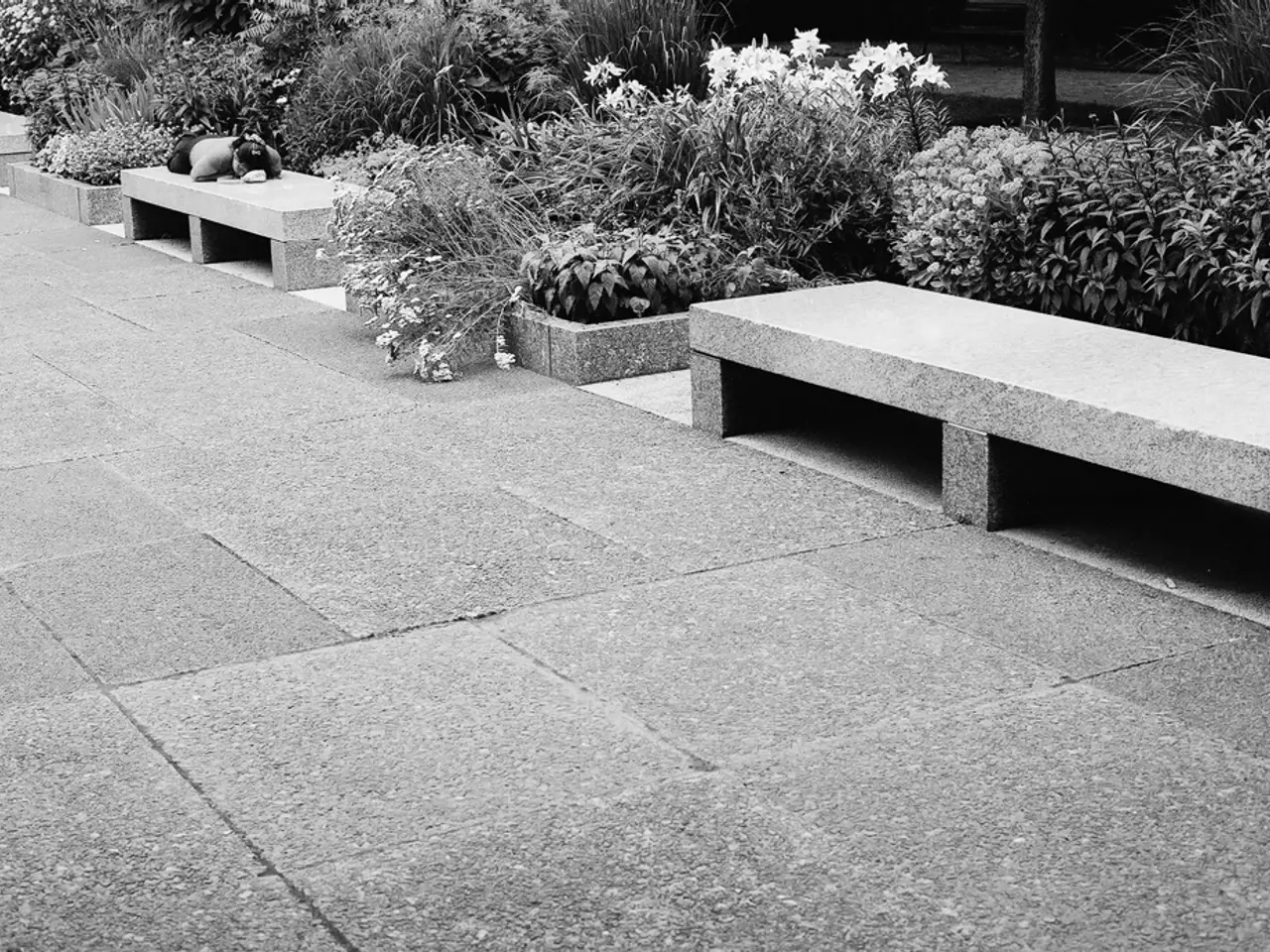Building a Stunning Zen Garden for Beginners
Zen gardens, rooted in Japanese culture, have origins that date back to the Muromachi period (1336-1573) and are a form of landscaping that promotes inner calm and tranquility. Here's a step-by-step guide on how to create your own Zen garden.
Choosing the Right Location
The first step in creating a Zen garden is choosing the right location. Whether indoors or outdoors, the space should be quiet and free of distractions, allowing you to fully immerse yourself in the meditative atmosphere.
Embracing Minimalism
A Zen garden should have a minimalist approach, with a muted color palette that reflects the natural world, such as earth tones or soft greens. The essential principles for creating a Zen garden are simplicity, austerity, naturalness, asymmetry, subtlety or mystery, and stillness. These guide the selection and arrangement of garden elements to promote relaxation, meditation, and contemplation.
Visualizing Your Layout
Before beginning planting, visualize the layout of your Zen garden by sketching it out. This will help you plan the placement of key elements and ensure a harmonious flow throughout the space.
Selecting Zen Garden Elements
Rocks and Gravel or Sand
Rocks and gravel or sand symbolize mountains, water, and natural landscapes, often raked into patterns that suggest waves or ripples.
Plants
Usually moss, small shrubs, bamboo, or trees chosen for their natural appearance and tranquility.
Water Features
Such as ponds or fountains, bringing movement and serenity.
Statues or Lanterns
For symbolic and aesthetic purposes, often a Buddha statue or stone lantern.
Asymmetrical Layout
Following natural forms and avoiding perfect symmetry to evoke a more organic feel.
Creating a Pathway and Seating Area
Creating a Zen garden is adaptable to any size, whether you're in a tiny apartment or have a spacious backyard. A pathway and seating area are essential for guiding movement and providing a space for contemplation.
Adding Soft Lighting and Focal Points
The act of raking sand or gravel in patterns has symbolic meaning, as it helps focus the mind and brings a sense of order to wandering thoughts. Soft lighting and focal points, such as a beautiful stone or a delicate plant, add depth and interest to your Zen garden.
Selecting the Right Materials
Zen gardens often incorporate natural elements like sand, rocks, and plants to replicate the essence of nature.
The central idea is the "spirit of place" (jigokoro), which stresses understanding the garden site intimately, especially the placement of stones, to harmonize with its natural energy.
In short, a Zen garden is a minimalistic and contemplative space designed through carefully balanced natural elements, arranged asymmetrically, to embody stillness and evoke a meditative atmosphere.
- The location you choose for your Zen garden, whether indoors or outdoors, should be quiet and free of distractions, fostering a meditative atmosphere.
- Embracing minimalism, a Zen garden should have a muted color palette, such as earth tones or soft greens, reflecting the natural world.
- Visualize the layout of your Zen garden by sketching it out, helping you plan the placement of key elements and ensure a harmonious flow throughout the space.
- Rocks and gravel or sand symbolize mountains, water, and natural landscapes, often raked into patterns that suggest waves or ripples in a Zen garden.
- Plants, such as moss, small shrubs, bamboo, or trees, are chosen for their natural appearance and tranquility in a Zen garden.
- Adding soft lighting and focal points, like a beautiful stone or a delicate plant, enhances the depth and interest of your Zen garden.
- To create a Zen garden, focus on selecting natural materials, like sand, rocks, and plants, to replicate the essence of nature, embodying the "spirit of place" concept.





